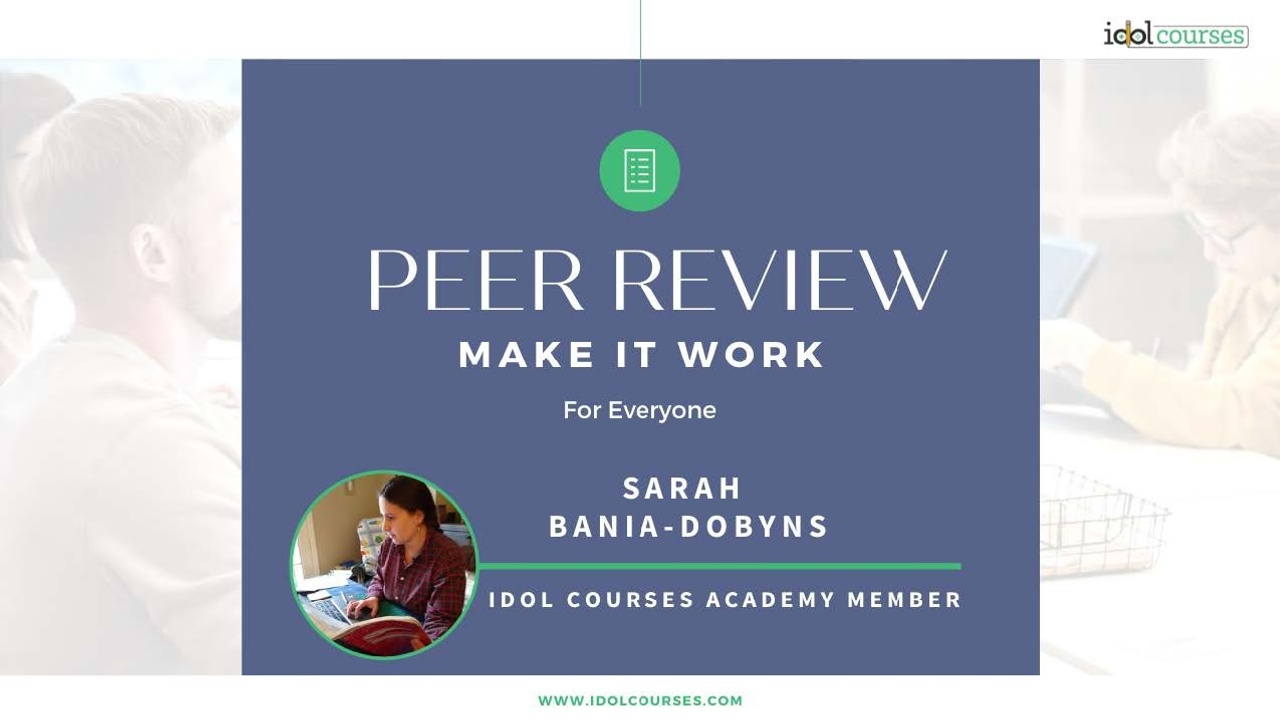Peer Review: Make It Work For Everyone
Jun 06, 2021
I have used peer review in all kinds of professional contexts, from teaching in higher education to my work consulting with clients on instructional design projects now. My many experiences with peer review have included teaching others how to use it, as well as giving and receiving peer review from others. From these experiences, I have learned that peer review can be a rewarding experience for all involved, but only if it is practiced with the intention and care it deserves. These are my tips for effective peer review for everyone.
Tip #1: Peer Reviewers Are Expert Reviewers
Peer review is the process of peers giving structured, focused feedback on in-progress work. In this context, ‘peers’ mean professional peers. Also, did you catch the point about in-progress work? It’s really hard to share in-progress work. Many of us fear it isn’t good enough for public consumption yet. That’s why reviewing your work with a group of peers who have shared professional experiences and expectations is important.
The idea of peer review is modeled on rigorous scientific research. Scientists (professional peers) conduct studies using shared professional standards in order to contribute new ideas to their disciplines. When they submit an article for publication, a committee of reviewers who are well-versed in the material provide structured feedback to help the writer ensure the results are sound. This model of experts providing feedback is applicable to all fields. Think about it: would you trust someone who knows nothing about learning to give you feedback on how effective your instructional design materials are?
Tip #2: Agree on What the Peer Review Will Cover -- and What it Won’t
Before going into any kind of peer review session, it’s important for everyone involved to agree on what you will discuss and what you will not discuss. There are different ways you could form an agreement. Here are two examples:
- As someone seeking feedback on your work, you can ask for feedback on very specific things. For example, you might let your reviewers know that you will later edit for grammar and spelling errors in a resource you created, so you’re not looking for grammar and spelling feedback. Instead, you might let your reviewers know that you are looking for feedback on the organization and design of the resource. If you are one of the reviewers, carefully listen to what your peer is asking for in their review and be conscientious about responding to their request. Don’t give feedback they didn’t ask for.
- If you belong to a peer accountability group, you could structure your peer review sessions on a set of shared guiding questions that you use for every session. As a group, you could work together to draft the guiding questions, or you could use a template and modify it to meet your group’s needs. When it’s your turn to receive feedback, you could specify which questions you want feedback on.
Tip #3: Build Trust into the Process
It’s important to develop a process that everyone can trust. This way, everyone involved can feel safe asking for feedback, knowing that the peer review process is designed to promote professional growth. One way to do this is by honoring agreements about what you will discuss and not discuss, as explained in the last section. When people in a peer review session do not honor agreements about the process, the session can devolve into a self-promotion platform. This quickly becomes unproductive and frustrating at best, and diminishing of trust at worst.
Another way to build trust into the process is by creating group norms that foster a peer review friendly culture. In small accountability groups, one way to do this is to create shared group norms, such as asking open-ended questions, avoiding criticism and debate, and other techniques to help your group stay focused on creating a respectful, supportive community where everyone can grow.
The good news is that if you structure your peer review well and everyone respects the process, peer review can be an excellent way to build trust and community in your professional field. As instructional designers, the more trust and community we build, the better equipped we will be to create engaging learning opportunities for everyone.

Connect with Sarah on LinkedIn.
Sarah Bania-Dobyns is a freelance Instructional Designer, Research Consultant, and professional skills instructor for emerging professionals in international affairs. She specializes in creating accessible, equitable, and engaging resources for organizations committed to social welfare and inclusion. On the side, she writes about food culture.
Stay connected with news and updates!
Join our mailing list to receive the latest news and updates from our team.
Don't worry, your information will not be shared.
We hate SPAM. We will never sell your information, for any reason.


